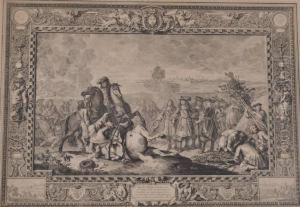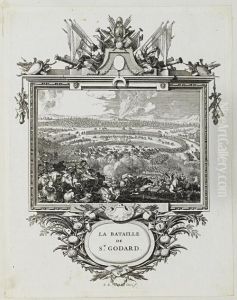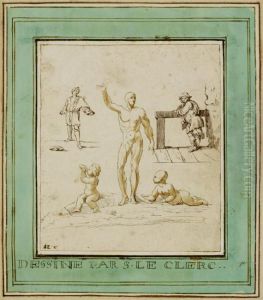Sebastien Le Clerc Paintings
Sébastien Le Clerc, also known as Sébastien Le Clerc the Elder to distinguish him from his son with the same name, was a prolific French artist and engraver born on September 26, 1637, in Metz, France. His early artistic training was under the direction of a painter from his hometown, before moving to Paris to continue his studies. He became a student and then a professor at the Royal Academy of Painting and Sculpture.
Le Clerc was renowned for his mastery in engraving, and he was appointed as an engraver to the King Louis XIV. His work was greatly influenced by the Baroque style, which was predominant during his time. He produced a wide variety of works including religious and historical subjects, architectural drawings, and book illustrations. His engravings were highly detailed and precise, reflecting his deep understanding of both art and science.
During his time in the royal court, Le Clerc also served as a designer for the Gobelins Manufactory, which produced tapestries for the king. His ability to translate grandiose concepts into intricate tapestry designs was well-regarded. His work extended to creating images for books, such as the illustration of medals and descriptions for the 'Cabinet des Médailles', and he also published a book on geometry.
Sébastien Le Clerc's legacy is significant in the history of French art. He not only contributed to the dissemination of the grand style of Louis XIV through his prints but also influenced the next generation of artists and engravers. His works are still studied and appreciated for their technical excellence and their role in the art and culture of the French Baroque period.
Le Clerc died on October 25, 1714, in Paris. His son, Sébastien Le Clerc the Younger (1676–1763), was also an accomplished artist and engraver. The legacy of the Le Clerc family continued through the generations, with several of his descendants becoming notable artists in their own right.


